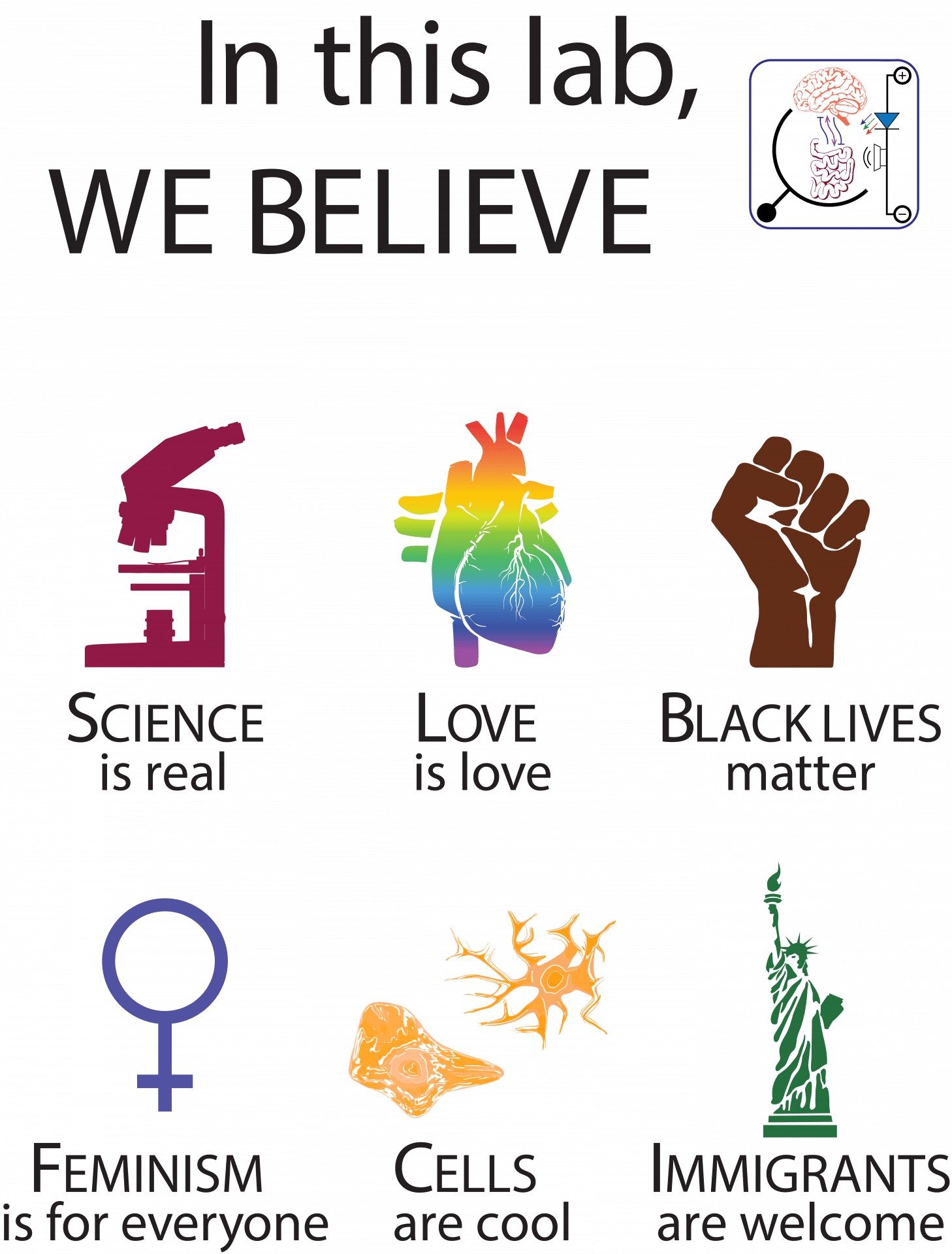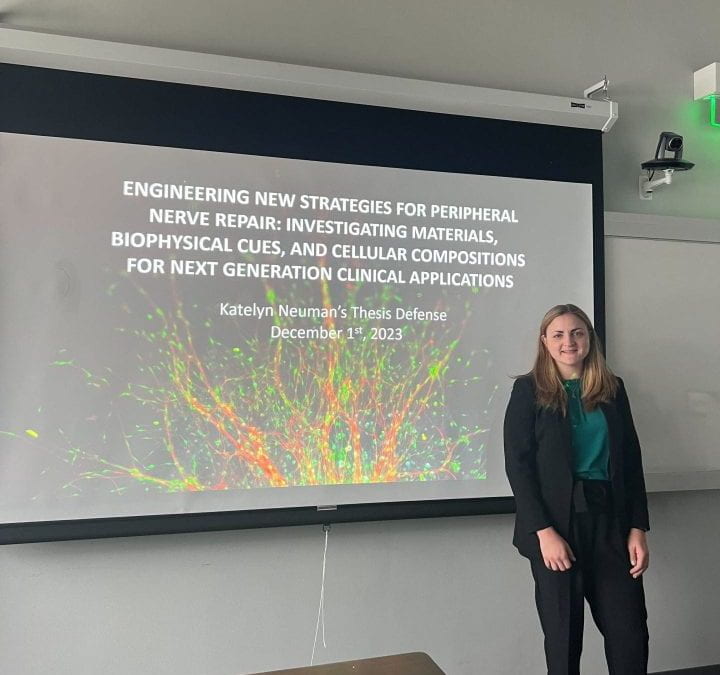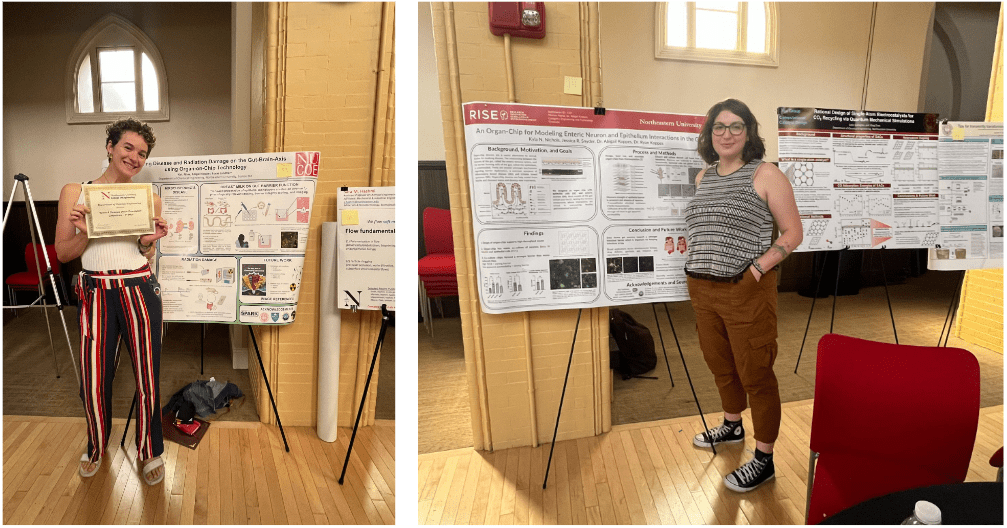Research
Neuromodulation of Innervated In Vitro Models

Projects focusing on in vitro neuromodulation and microenvironmental modeling have grown in popularity with the introduction of biomaterials to simulate in vivo conditions, electrical stimulation and analysis devices such as microelectrode arrays, and advanced culturing techniques in platforms that allow for axon growth and interaction with other cell types. Since debilitating neurological disorders affect many in the world, it is important that experimentation often seeks to discover regenerative sources or infer deeper knowledge of normal vs disease-state neural mechanisms.
Researchers at ABNEL are currently undergoing projects involving both the central and peripheral nervous systems. Multiple technologies, including ABNEL’s organ-on-chip devices, are being harnessed to modulate neural behaviors and relationships with other cells. For example, targeted optogenetic stimulation is used to employ axonal regenerative capabilities of Schwann cells and selectively activate autonomic nerves to recapitulate cardiac innervation and determine roles in human development. Biomaterials are also being developed to mimic the extracellular matrix and allow for complex, realistic 3D creation of neural tissues
Recent publications:
Tess Torregrosa, Sophie Webster, Chiamaka Aghaizu, Jonathan Soucy, Christopher Bertucci, Leigh Plant, Abigail Koppes, Ryan Koppes. Cryopreservation and functional analysis of cardiac autonomic neurons. July 2020. https://doi.org/10.1016/j.jneumeth.2020.108724
Ventre, Daniel; Puzan, Marissa; Ashbolt, Emily*; Koppes, Abigail. Enhanced total neurite outgrowth and secondary branching in dorsal root ganglion neurons elicited by low intensity pulsed ultrasound. Journal of Neural Engineering. April 2018. DOI: https://doi.org/10.1088/1741-2552/aabeba
Recent review:
Christopher Bertucci, Ryan Koppes, Courtney Dumont, and Abigail Koppes. Neural responses to electrical stimulation in 2D and 3D in vitro environments. July 2019. https://doi.org/10.1016/j.brainresbull.2019.07.016
Microphysiological Systems

ABNEL has developed a laser cut and assemble microphysiological system (MPS), or organ-on-chip device, of the gut and the heart 1,2. MPSs allow for physiologically relevant modeling of organ systems and diseases with limited confounding factors present. This methodology is a more cost effective and manufacturable option compared to the current standard of PDMS soft lithography.
Ongoing research aims to develop an MPS of gut and enteric nervous system (ENS) physiology to further study the gut-brain connection. ABNEL also aims to develop MPSs of various neural disorders that have an expected connection to the gut including Parkinson’s, visceral pain, depression, and anxiety. The study of parasympathetic and sympathetic innervation in cardiac tissue is also being explored through the use of our cut and assemble MPSs. Electrophysiological techniques, such as transepithelial electrical resistance (TEER) and microelectrode arrays (MEA), are frequently utilized to study endothelial barrier function and neuronal action potentials, respectively.
Recent publication:
Sanjin Hosic, Adam Bindas, Marissa L. Puzan, Will Lake, Jonathan Soucy, Fanny Zhou, Ryan A. Koppes, David T. Breault, Shashi K. Murthy, Abigail N. Koppes. Rapid prototyping of multilayer microphysiological systems. May 2020. https://doi.org/10.1021/acsbiomaterials.0c00190
Recent reviews:
Kyla Nichols, Ryan Koppes, Abigail Koppes. Recent advancements in microphysiological systems for neural development and disease. May 2020. https://doi.org/10.1016/j.cobme.2020.05.003
Jonathan R. Soucy, Adam J. Bindas, Abigail N. Koppes, and Ryan A. Koppes. Instrumented Microphysiological Systems for Real-time Measurement and Manipulation of Cellular Electrochemical Processes. Oct 2019. https://doi.org/10.1016/j.isci.2019.10.052
Gut-Brain Axis and Gut Physiology

The enteric nervous system (ENS) is often called the second brain because of the high number of neurons along the GI tract. While this enables the gut to remarkably function independent of the rest of the body, there is a fair amount of communication between the gut and the brain. In particular, about ~80% of nerve fibers between the gut and brain are dedicated to send information to the brain.3 Recent studies involving the gut microbiome have demonstrated how this connection has the ability to impact the brain itself and may play a role in a number of central nervous system disorders.
ABNEL conducts research focusing on the intersection of the gut lumen (space containing food and microbes), epithelium (permeable barrier to the body), and ENS. This work aims to enable a better understanding of their impact on some CNS diseases like Parkinson’s disease. For more general information on the epithelium itself, please check out our recent review below led by Jessica.
Recent publications:
Sanjin Hosic, Will Lake, Eric Stas, Ryan Koppes, David T. Breault, Shashi K. Murthy & Abigail N. Koppes.Cholinergic Activation of Primary Human Derived Intestinal Epithelium Does Not Ameliorate TNF-α Induced Injury. June 2020. https://doi.org/10.1007/s12195-020-00633-0
Marissa Puzan, Sanjin Hosic, Caroline Ghio, Abigail Koppes. Enteric Nervous System Regulation of Intestinal Stem Cell Differentiation, Epithelial Monolayer Health, and Inflammation. Scientific Reports. April 2018. https://doi.org/10.1038/s41598-018-24768-3
Recent review:
Jessica Snyder, CM Wang, AQ Zhang, Y Li, Josh Luchan, Sanjin Hosic, Ryan Koppes, Rebecca Lyn Carrier, Abigail Koppes. Materials and Microenvironments for Engineering the Intestinal Epithelium. Feb 2020. https://doi.org/10.1007/s10439-020-02470-8
Cited Papers:
1 Hosic, S. et al. Rapid prototyping of multilayer microphysiological systems. ACS Biomaterials Science & Engineering (2020).
2 Soucy, J. R. et al. Organ-on-chip Model for Investigating Autonomic Innervation of the Cardiac Microenvironment. Circulation Research 125, A421-A421 (2019).
3 Cryan, J. F. et al. The Microbiota-Gut-Brain Axis. Physiological Reviews 99, 1877-2013, doi:10.1152/physrev.00018.2018 (2019).


Katelyn Neuman Defends her Thesis
Today on December 1st at approximately 4PM, LNNR lab member, Katelyn Neuman, successfully defended her thesis "Engineering New Strategies for Peripheral Nerve Repair: Investigating Materials, Biophysical Cues, and Cellular Compositions for Next Generation Clinical...

Kat and Kyla Succeed at Research Showcase
Congratulations to both Kat and Kyla for their performance at today's Research Showcase! The Research Showcase had members from every level of the Chemical Engineering Department (undergraduate to faculty) participating in poster presentations. After the poster...